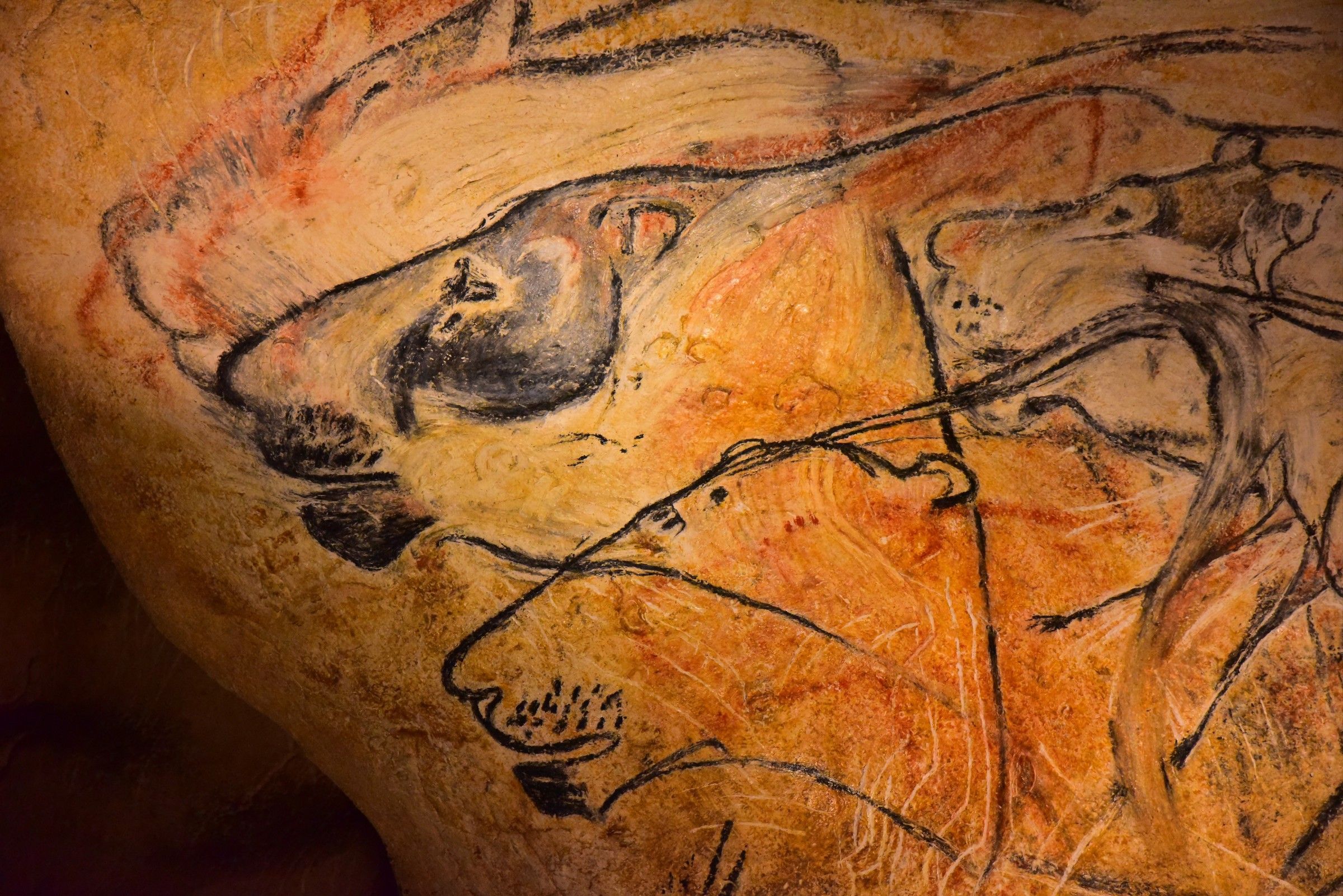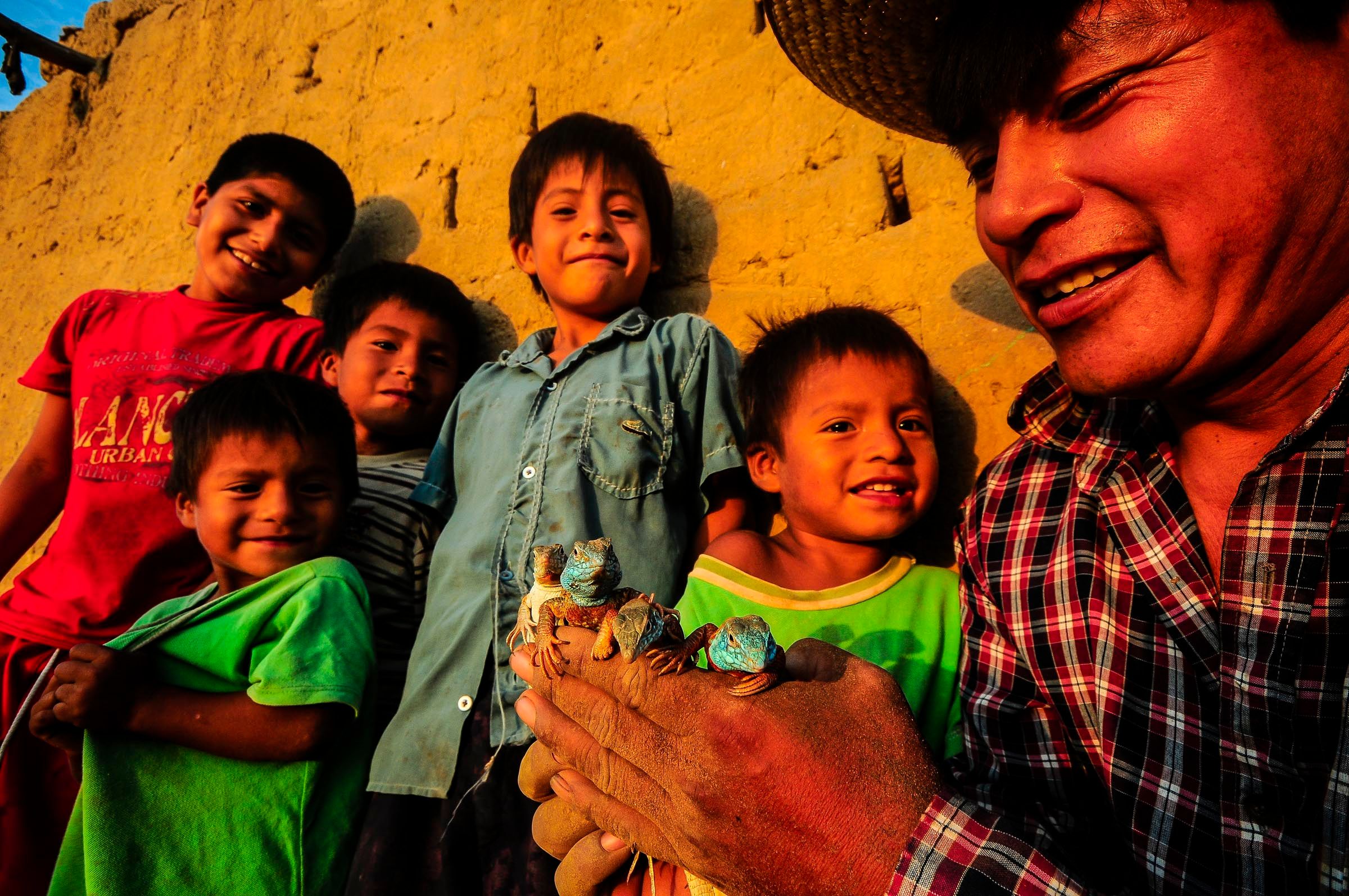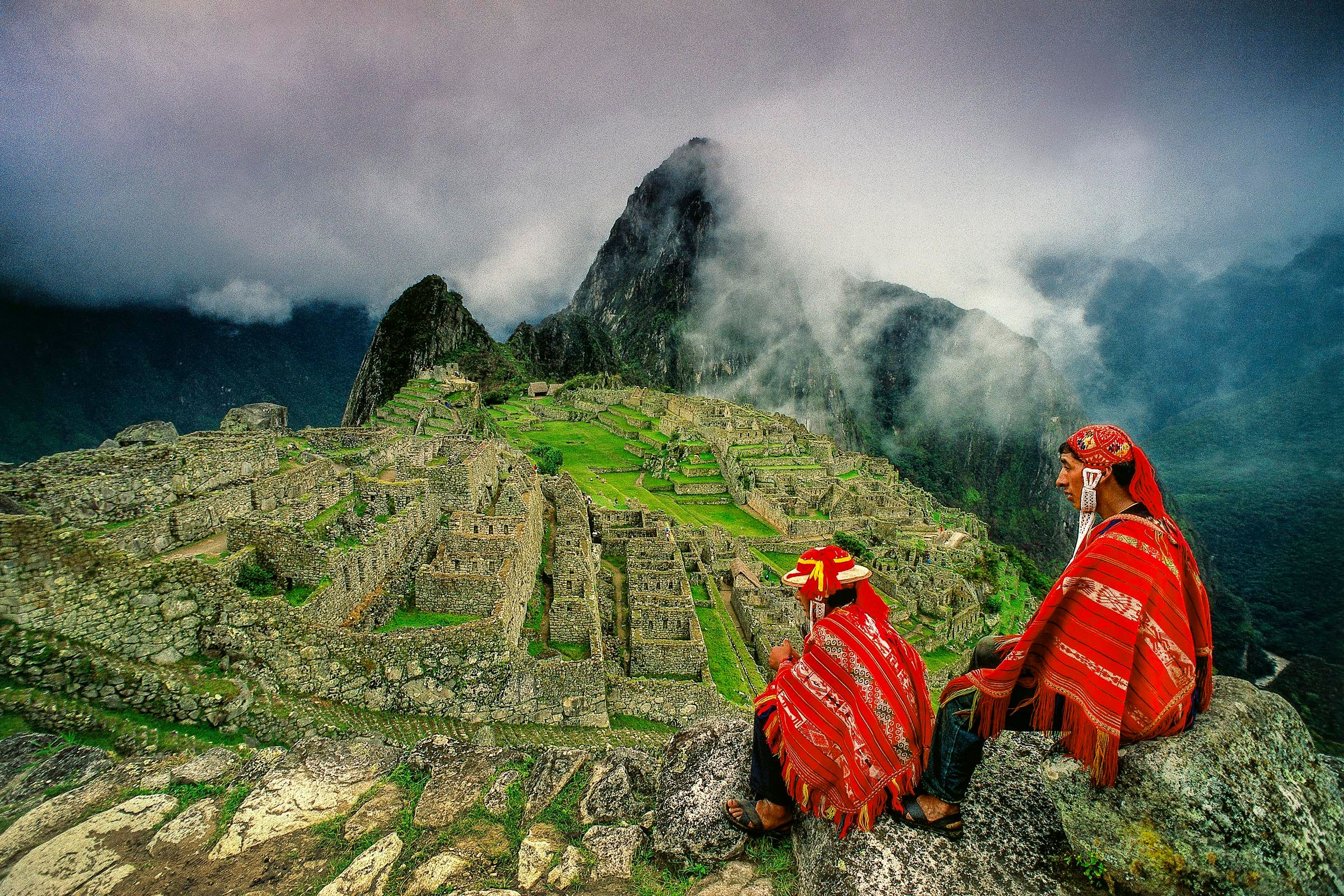Chaparrí Ecological Reserve

In 1998, a law was passed in Peru, which allowed for the construction of private conservation areas as an alternative to public ones. This new legislation became a real opportunity for a particular area of 42422 hectares in the North Coast of Peru, home to rural communities: Chaparrí. This territory had not been used for agricultural reasons as it was not very fertile; in the best seasons only 200 or 300 hectares were arable, while the rest of the land was used by illegal tree cutters and animal breeders. The flora and fauna of this place were severely endangered: the leaders of the rural communities understood that they could profit from this land by selling the precious wood of trees growing in its forest, while poachers massively contributed to the destruction of its fauna. For more information, visit the UNESCO site or the Chaparrí official website.
The story: Chaparrí as synonym of sustainability
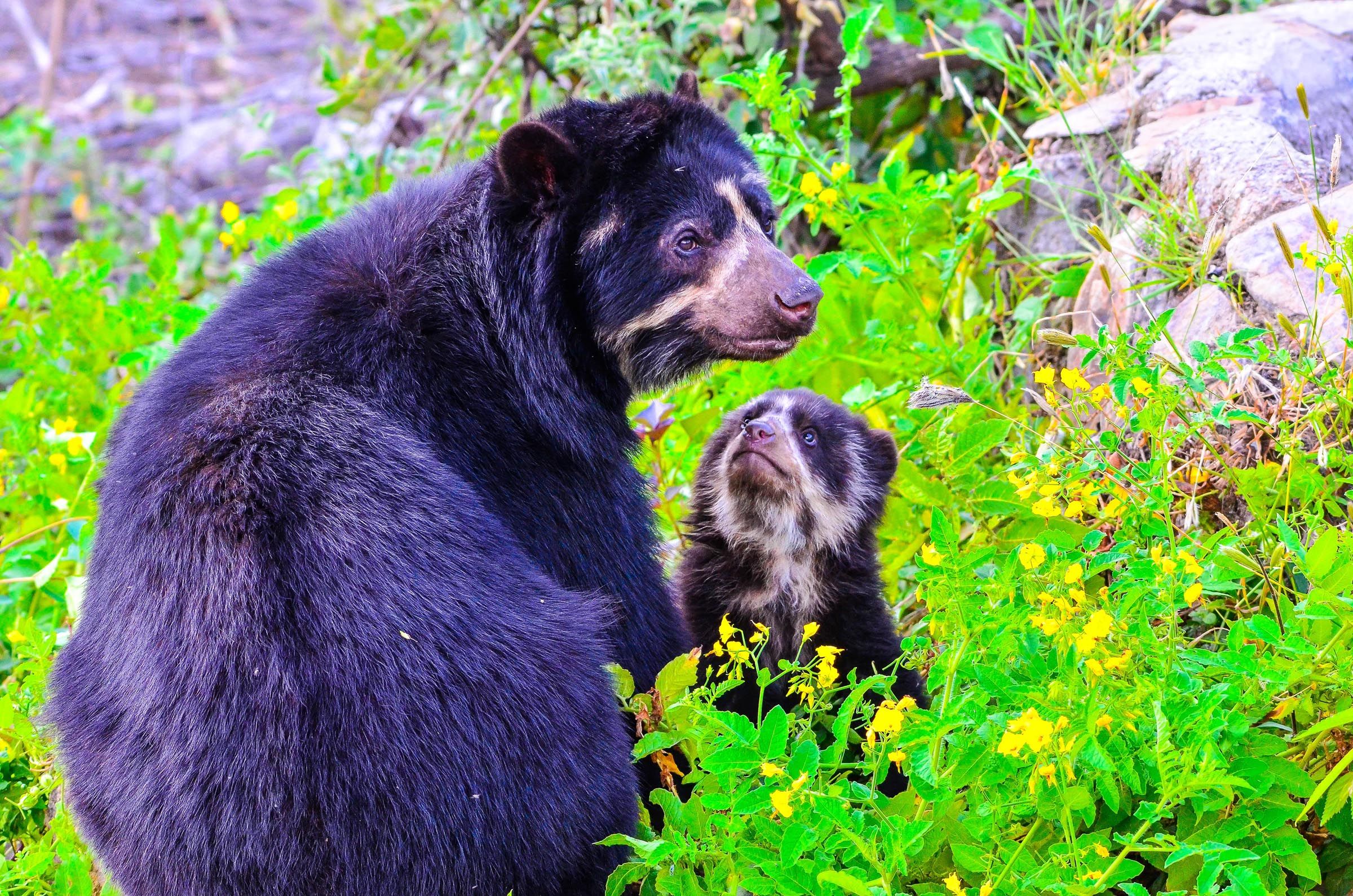
Andean Bear
It was Heinz Plenge himself who proposed an alternative and fought to guarantee a better future to Chaparrí. It took him more than a year and a half to convince the rural communities to transform the place into a private conservation area, and just as much effort was spent on finding financiers. Plenge’s priority was the conservation of the Dry Wood of Chaparrí: he knew it had a lot of potential and thought it could become a captivating destination and a symbol of sustainable tourism in Peru, a concept which, at the time, was completely unknown to a community who was almost entirely unschooled and not very eager to understand. In fact, it was thought that what attracted tourists to Peru was the mere presence of archaeological sites, but Heinz Plenge firmly believed in this project and knew that Chaparrí, precisely because of its exceptional natural value, could become an equally attractive destination.
In order to do so, the concept of “mesa quatro patas”, or “four-legged table” was born. In consists of four pillars always having to be at the same level in order to keep a plan balanced, representing the notion of sustainability and its application in the social, economic, environmental and cultural field. Great steps have been taken in each of these four fields. Especially from a social point of view, the results were remarkable, as this area currently offers work to 80 people, only for the tertiary sector. Equally important is the environmental and conservation field; Chaparrí hosts the largest population of Andean bears in South America, whose scientific name is tremerctos ornatus and who represents an almost completely vegetarian and very rare species.
November 9, 2012
Camera Nikon D700
Lens 150 mm (APS-C)
Exposition f/8, 1/125 s
ISO-1000
License: CC BY-SA 4.0
June 9, 2019
Camera Nikon D810
Lens 24 mm
Exposition f/22, 1/250 s
ISO-12800
License: CC BY-SA 4.0

Temple of the Moon
From a cultural perspective, the community of Chaparrí has made fundamental contributions to the cultural traditions of the area, as it has managed to redeem the figure of Master Curanderos, healers whose origin is ancient and rooted in the culture of this place. An aura of fear had built up around these individuals, which led to their persecution but, especially because of the work of Heinz Plenge, they were rehabilitated, as was the Mucich culture they represent. Thanks to an illustration of an artefact contained in a book written by Dr. Adine Gavazzi, a very important project was born: the drawing served as a sketch to design a solemn place, viscerally linked to the culture of the Curanderos, The House of the Moon.
We see it represented in this photo by Heinz Plenge, which was taken at the first light of dawn and captures the end of a Curanderos ritual that lasted all night.
The House of the Moon immortalized in this shot represents restitution and conveys a message of peace, the same peace that now reigns between the environment, culture and Curanderos through a single glue: sustainable tourism.
Dr. Adine Gavazzi about Master Curanderos
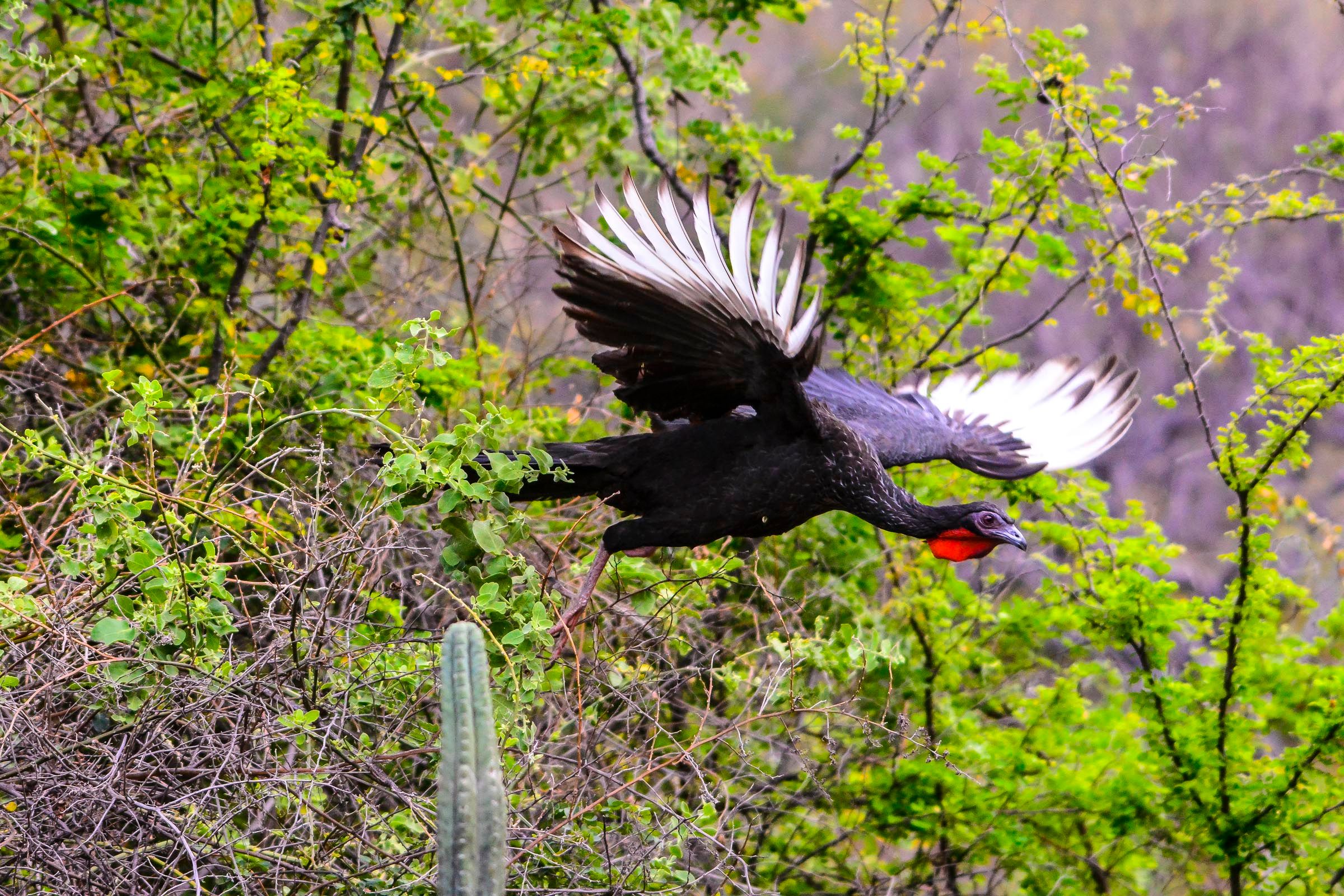
Aliblanca Guan
The third image portrays an Aliblanca guan in flight. This species was considered extinct by scholars, but twenty years ago it was rediscovered thanks to the work done in Chaparrí.
Two factors threatened the survival of this species: hunting and the loss of natural habitat; what Chaparrí offered was the solution to both. This reserve is the perfect habitat for the Aliblanca guan, therefore hunting became forbidden. The species began with only six pairs inside the reserve, while today in Chaparrí there are about 100 specimens, meaning a third of the world population. This testimony makes one understand how crucial this area is for environmental sustainability and how it acts as a resource for the defense of biodiversity.
However, the issue of economic sustainability remains, representing the only weak spot of this extraordinary reserve for which the whole community is fighting with pride, despite difficulties. Tourism motivates the population and defends the project. However, 15,000 visitors a year are necessary to support ongoing projects and undertake the development of other areas in the reserve.
The role of sustainable tourism is therefore crucial for the defense of ancestral cultures and for the economic needs of Chaparrí. Only a thriving tourist activity would guarantee this place to continue to grow and preserve nature.
July 29, 2015
Camera Nikon D7100
Lens 150 mm (APS-C)
Exposition f/5,6, 1/1600 s
ISO-160
License: CC BY-SA 4.0
September 22, 2011
Camera Nikon D300
Lens 75 mm (APS-C)
Exposition f/11, 1/1200 s
ISO-320
License: CC BY-SA 4.0
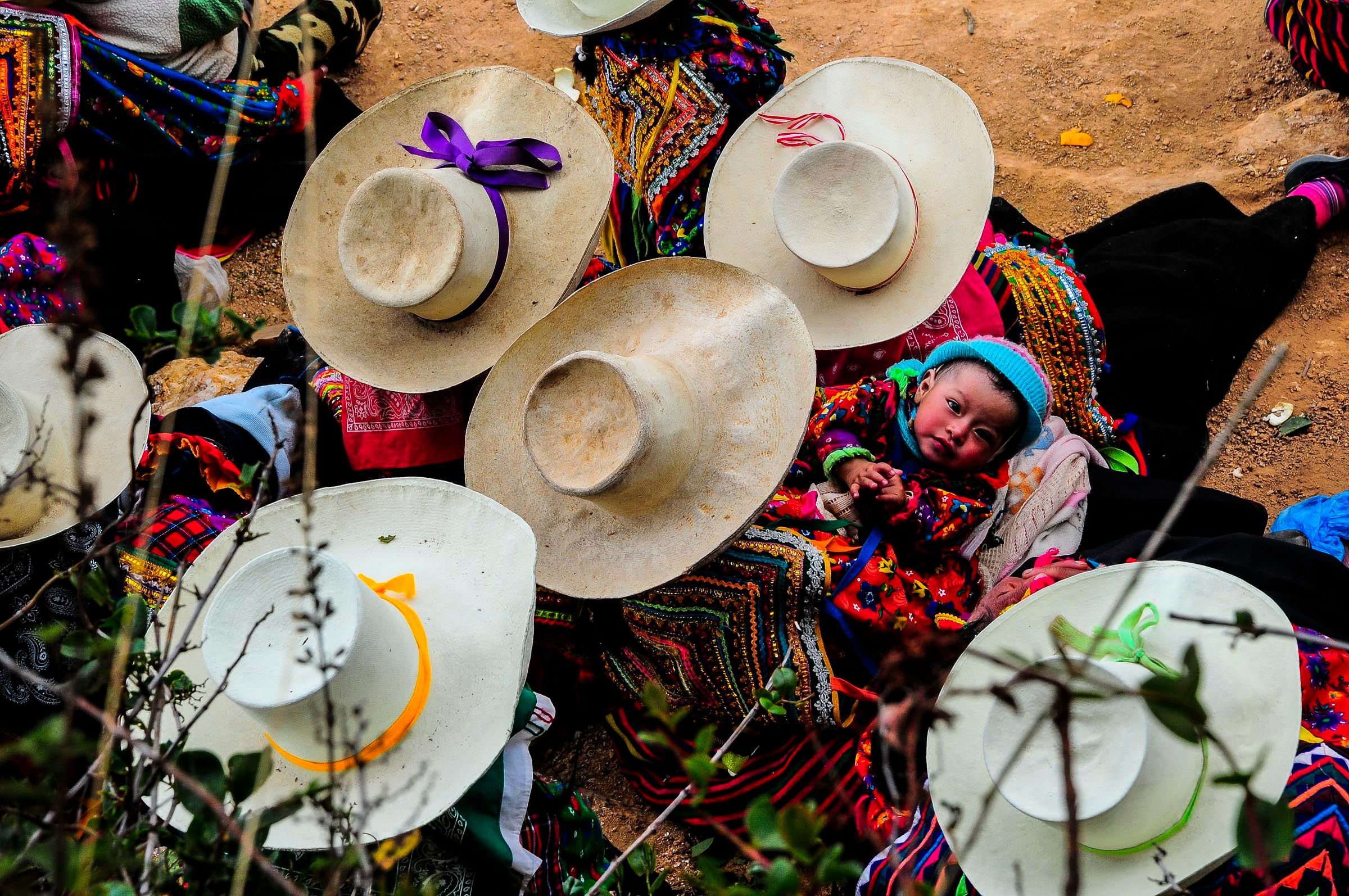
Inkawasi Community
This photograph, representing a series of white hats hiding their wearers’ faces, was taken at a party held every 12 to 15 years to promote sustainable tourism in Peru.
We are still in the vast area of Chaparrì, more precisely with the Inkawasi people, who live near Kañari. This area recently found itself at the center of a natural revaluation project for which a biocorridor was built, connecting two valleys: La Leche and Chancay. Thanks to this project, which artificially linked two rivers, the area is no longer desertic, as it was in the past.
As you can see, all the hats are facing in the same direction, that is, the one where the “comuneros de Chaparrí” are about to walk from. The most touching aspect of this photo, however, is the look of the child who looks directly towards Heinz’s camera. The child represents the future and, in fact, he looks right at us.
